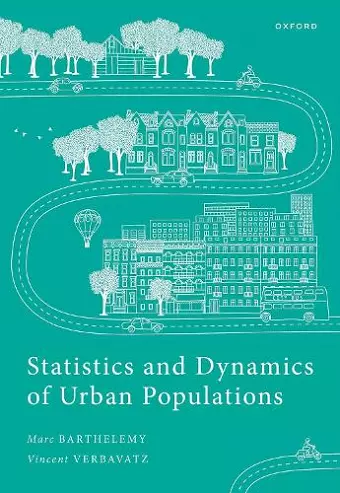Statistics and Dynamics of Urban Populations
Empirical Results and Theoretical Approaches
Marc Barthelemy author Vincent Verbavatz author
Format:Hardback
Publisher:Oxford University Press
Published:21st Dec '23
Should be back in stock very soon

Urbanization is a fundamental process in human history and is increasingly affecting our environment and society. Although cities have existed for centuries, describing and controlling urbanization has always been difficult and still is: cities are continuously changing over time in a non-homogeneous fashion that has puzzled historians, geographers, philosophers, economists, urbanists, engineers, mathematicians and physicists. In particular, one of the most debated issues of urban studies has been the question of urban population growth. How do cities appear and disappear, grow or decline? Why do we observe a hierarchy of cities from small to large and not a typical city size ? These questions are not only relevant for census purposes. The population size of the city is an important determinant for most of urban issues: land management, congestion, public transport planning, economic growth, innovation incentives, food and good supply and climate-change adaptation. A sound understanding of population growth processes is an inescapable path for a good monitoring of city planning. This book describes all aspects of quantitative approaches to urban population growth, ranging from measures and empirical results to the mathematical description of their evolution. It will be of interest to researchers working on quantitative aspect of cities and from many different disciplines such as quantitative geography, spatial economics, geomatics, urbanism and transportation, physics, or applied mathematics. This book will also be of interest to graduate students and researchers entering the field or interested in quantitative studies of urban systems.
ISBN: 9780192867544
Dimensions: 253mm x 178mm x 14mm
Weight: 502g
176 pages